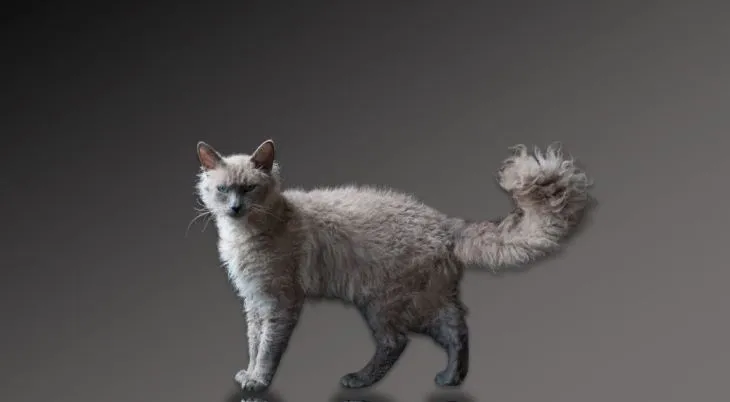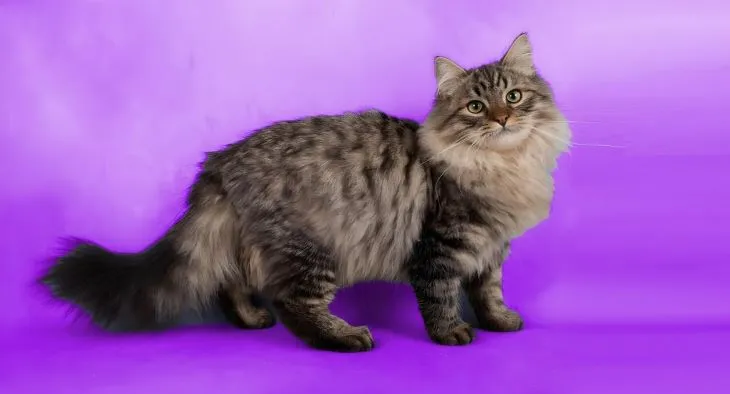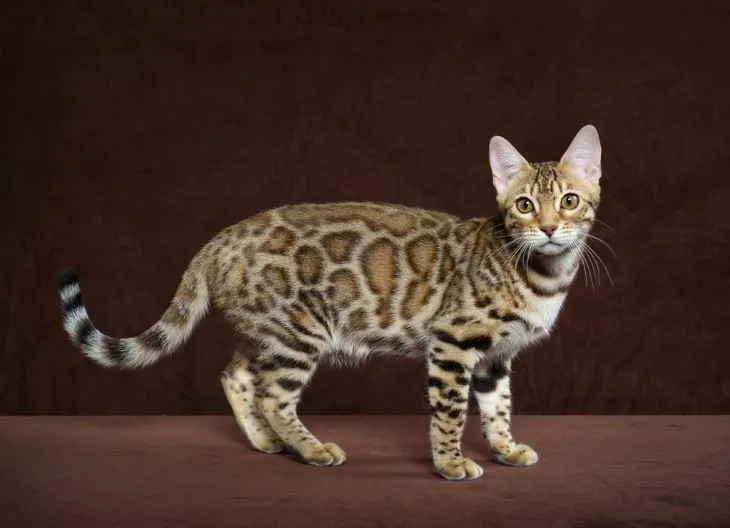Why Do Cats Wag Their Tails? Understanding Feline Body
Every species expresses its emotions in its own way. Cats show their happiness, sadness, or other feelings distinctly by wagging their tails.
By: Elizabeth Rikas

The information in this article is intended to educate cat parents and is not a substitute for veterinary guidance. In case of any concerns about your cat’s health, please talk with your veterinarian.
Cats wag their tails to express happiness, agitation, concentration, and greetings. The speed and direction of the tail wag, each convey different meanings on different occasions.
For instance, cats thrash their tails when annoyed, twitch the end when playful, and quiver their tails when excited. There are various tail movements that signify different emotions.
As a cat parent, if you want to know and understand in detail when, why, and how cats wag their tails and the hidden meaning behind each movement, read the article carefully to learn all this and much more.
Click to know the difference: Male vs Female Cats
Why Is It Important To Understand Your Cat’s Unique Tail Language?

Every cat is special and might move its tail in its way. Some cats may wave their tails a lot to show how they feel, while others may not move their tails as much. As someone who cares for a cat, it’s good to watch how your cat acts and learn what its tail is “saying.”
By observing how your cat moves its tail, its body language, and the sounds it makes, helps you understand your cat’s wants and needs better, fostering a stronger bond with your furry companion.
Interesting Read: Why Do cats Drool?
Why Do Cats Wave Their Tails?

Cats are intriguing pets that express their emotions in unique ways. Tail movements in cats convey a lot of information. Let’s explore the meanings behind various tail wagging behaviors in cats.
Tail Wagging As A Sign of Happiness (Wrapping Tail)
Cats frequently sway their tails to express happiness. When relaxed, a cat might gently sway its tail from side to side or hold it upright with a slight curve at the tip. You’ll notice this behavior when someone pets them gently or when they’re enjoying a favored snack.
Tail Wagging As A Sign of Agitation (Swishing Tails)
In contrast cats swish their tails indicate agitation or irritation in cats. If a cat’s tail flicks back and forth quickly or thumps against the ground, it’s often a warning sign that they feel overstimulated, anxious, or annoyed.
Tail Wagging As A Sign of Concentration
Cats might also move their tails back and forth when paying close attention to something. This could be a toy, a small animal they want to chase, or an interesting noise.
In these situations, the tail may twitch or wag rapidly as the cat concentrates on the object of their attention. You might also see other signs like their eyes getting bigger, their ears pointing forward, and their body crouched down, ready to jump.
Tail Wagging As A Sign of Greeting (Tail Quivers)
When cats greet their human companions or other familiar cats, they may wag their tails as a friendly gesture. This type of tail wagging is usually caused by other friendly body language, such as rubbing against the person or cat, purring, or holding their tail upright with a slight curve at the tip. A cat may approach with their tail held low and wag it slowly as they assess the new individual.
Cats Wagging As A Sign of Danger (Puffy Tail)
When a cat’s tail becomes fluffy and enlarged, it signals fear or a sense of being threatened. This reaction typically occurs when the cat encounters another animal, such as a dog or another cat, or a frightening stimulus like a loud vacuum cleaner. Some experts suggest that cats puff up their tails and arch their backs to appear larger and more intimidating to whatever is alarming them.
Sign of Tails Wagging While Dreaming (The Sleep Twitch)
Cat experts explain that cats, similar to animals with brains like ours, experience a deep sleep phase known as REM. When a cat gently sways or flicks its tail while sleeping, it’s likely dreaming about its daily experiences. These dreams might involve scenarios like chasing a bird, enjoying a delicious meal, or receiving affection from its human family.
Tail Wagging As A Sign of Pain (Lying Down Waving)
If your cat is lying down and moving its tail while behaving unusually—such as avoiding food or hiding—it could indicate sickness or pain. If you’re concerned about your cat’s health, promptly take it to the veterinarian to determine the issue.
Tail Wagging As A Communication Tool
Apart from the signs mentioned earlier, cats utilize their tails as an essential means of communication, not just with humans but also with other cats. When two friendly cats meet, they might approach with tails held high, gently wagging them while sniffing and rubbing against each other.
On the other hand, if a cat feels threatened by another feline, they may puff up their tail, lash it back and forth, or hold it low and wag it rapidly to signal their aggression.

Frequently Asked Questions
Conclusion
Cats’ tail wagging is a fascinating aspect of their body language that can convey a wide range of emotions, from happiness and contentment to agitation and concentration. So it is necessary to understand the various reasons behind your cat’s tail movements. By considering the context in which they occur, you can gain valuable insights into your feline companion’s emotional state and needs.

About the Author
Elizabeth Rikas
Elizabeth is a passionate advocate for feline health and well-being, drawing from her years as a dedicated pet parent to three cats—Gypsy, Swan, and Alfred—and her invaluable experience volunteering at animal shelters. A seasoned writer with a lifelong love for cats, Elizabeth began sharing her insights in her teens and has since contributed extensively to platforms focused on feline care. Through her expertise and heartfelt dedication, she empowers pet owners with practical advice and research-backed knowledge to nurture their furry companions.
